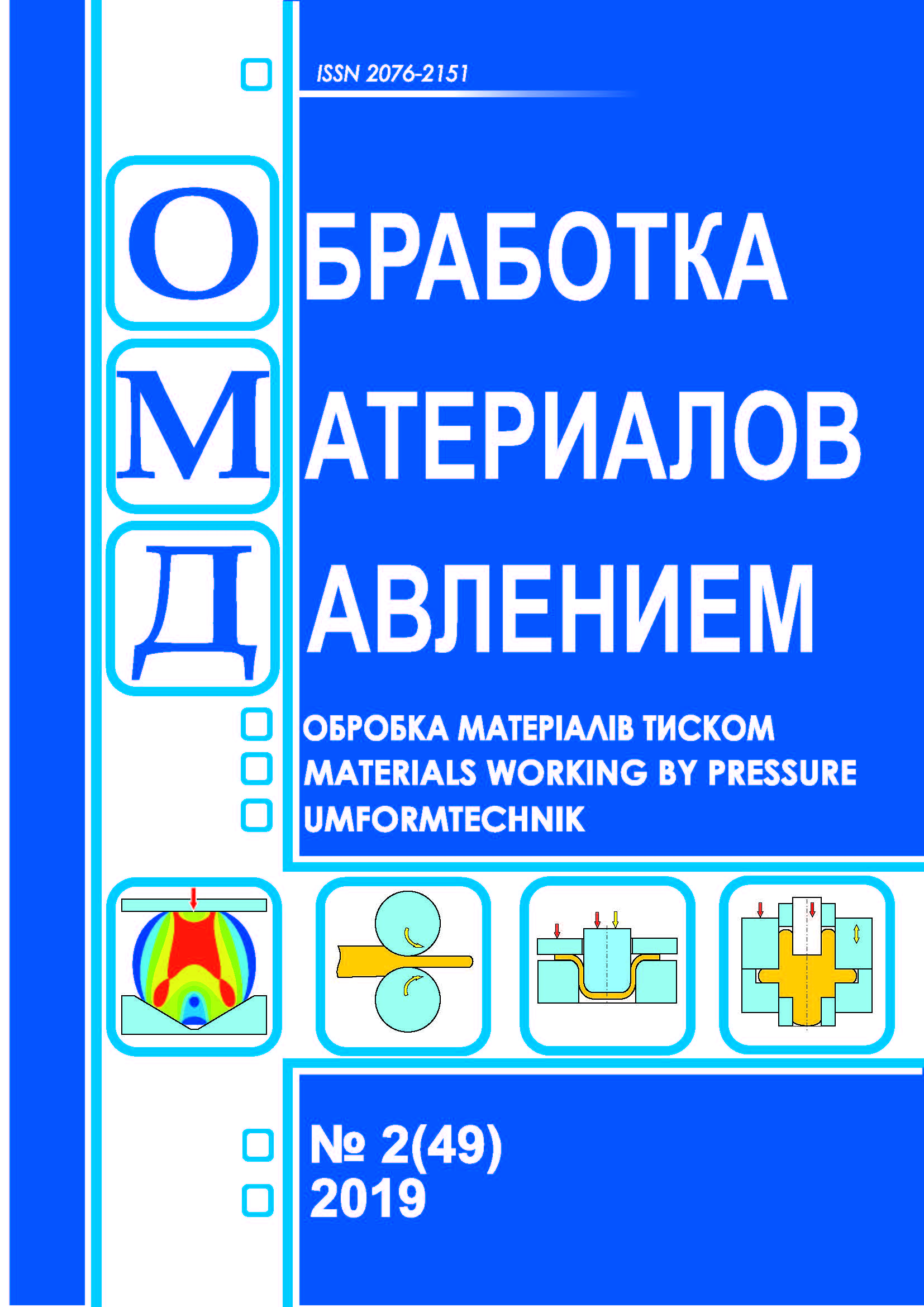Transverse bending tests for closed reinforcing profiles of bent and bent-welded execution
DOI:
https://doi.org/10.37142/2076-2151/2019-2(49)156Keywords:
bent and bent-welded profile; cold bending profiling; test; transverse bending; deflection; force; operational quality; rigidity.Abstract
Nahnibeda M. M., Kukhar V. V., Tkachov R. O., Radushev O. O., Yas’ko S. G., Frolov E. A. Transverse bending tests for closed reinforcing profiles of bent and bent-welded execution // Material working by pressure. – 2019. – № 2 (49). - P. 156-162.
The necessity of improving the designs and manufacturing techniques of cold-formed reinforcing profiles for the construction, engineering and other industries is substantiated, while the need for observing the quality indicators that are required by the operating conditions of the profiles is shown. It was revealed that the indicators of operational reliability of reinforcing profiles are the rigidity characteristics, which are determined by transverse bending tests. The goal is to determine the differences in the rigidity characteristics of the reinforcing profile with dimensions of 40 mm × 50 mm cold formed with a bent semi-closed section with a gap between the edges of not more than 0.5 mm, formed along the side having a size of 40 mm, and a profile made by multi-roll forming a steel strip in profile-bending mill in a closed shape and subsequent welding of the edges with the formation of a longitudinal weld in the middle of the side having a size of 50 mm The determination was carried out by experimental transverse bending tests on a universal testing machine. Samples of profiles with a length of 1000 mm were tested, three samples for each version of the profile. By measurements and statistical processing, it was found that the average wall thickness of the bent profile was 1.936 mm, and that of bent welded – 1.843 mm. Graphic and analytical dependences of the deflection of the profiles on the value of the applied force during the test are obtained. It was revealed that, in spite of the smaller average wall thickness, the reinforcing profile of the bent-welded version is more rigid in comparison with the profile of the bent version. This is confirmed by the fact that the set deflection value for the most unfavourable case of the profile loading on the larger side decreases by 59 %, and when the profile load on the smaller side, the deflection decreases by 0.7 %.
References
Kukhar V.V., Anishchenko O.S., Nagnibeda M.M., Method of calculation of stress-strain state of sheet billet in bending taking into account material strengthening. Bulletin of NTU "KhPI". 2017, 37 (1259), pp. 36-41. (in Ukrainian).
Kuhar V.V., Nagnibeda N.N. Testing of reinforcing profiles and determination of their strength and geometric characteristics. Problems of tribology. Khmelnitsky: KhNU. 2016, 1 (79), pp. 30-35. (in Russian).
Rejzner J., Lexcellent C., Raniecki B. Pseudoelastic behaviour of shape memory alloy beams under pure bending: experiments and modelling. International Journal of Mechanical Sciences. 2002, 44, pp. 665-686.
Bilston D., Ruan D., Candido A., Durandet Y. Parametric study of the cross-section shape of aluminium tubes in dynamic three-point bending. Thin-Walled Structures. 2019, 136, pp. 315-322.
Nelson T., Bruton J., Rieske N., Walton M., Fullwood D., Howel L. Material selection shape factors for compliant arrays in bending. Materials & Design. 2016, 110, pp. 865-877.
Sun Y., He A., Liang Y., Zhao O. In-plane bending behaviour and capacities of S690 high strength steel welded I-section beams. Journal of Constructional Steel Research. 2019, 162, p. 105741.
Ahola A, Björk T., Barsoum Z. Fatigue strength capacity of load-carrying fillet welds on ultra-high-strength steel plates subjected to out-of-plane bending. Engineering Structures. 2019, 169, p. 109282.
Dang X., He K., Zhang F., Zuo Q., Du R. Multi-stage incremental bending to form doubly curved metal plates based on bending limit diagram. International Journal of Mechanical Sciences. 2019, 159, p.1930.
DSTU GOST 8.207: 2008. Direct measurements with multiple observations. Methods of processing the results of observations. Kyiv: Statestandart. 2008. (in Russian).
Gmurman V.E. Probability theory and mathematical statistics. Moscow: Higher School. 1972, 368 p. (in Russian).
Gaskarov D.V., Shapovalov V.I. Small sample. Moscow: Statistics. 1978, 248 p. (in Russian).

